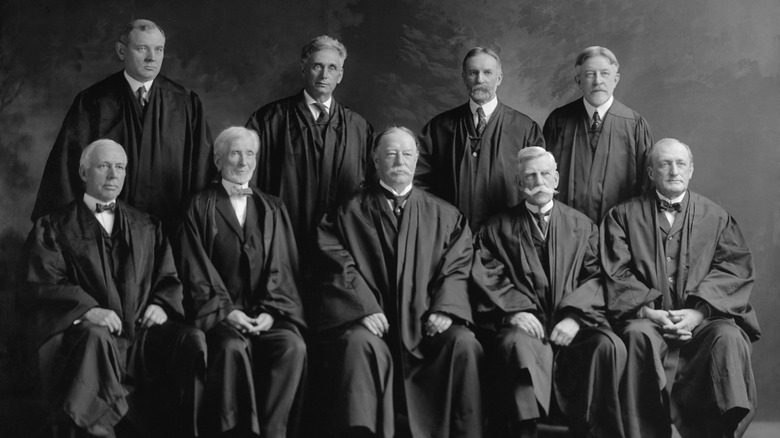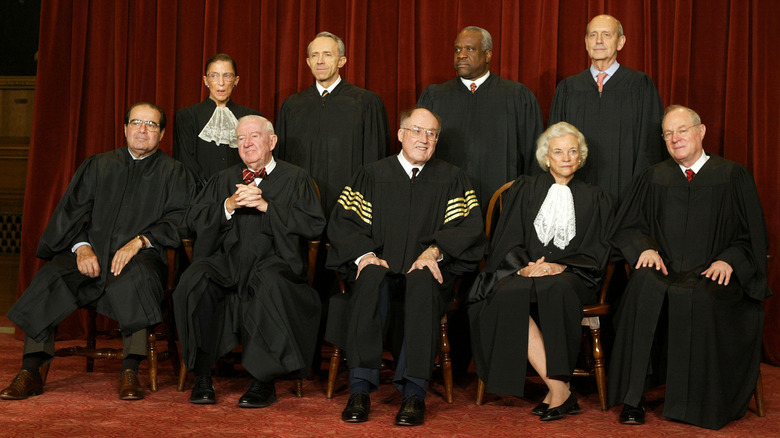The Real Reason Supreme Court Justices Wear Black Robes
The origin of judicial robes in the United States is rooted in centuries of previous use in England and mainland Europe. According to Juris Magazine, robes in English and later Colonial courts could often be very colorful, with their color scheme typically depending on the season. In the years immediately following American Independence, robes briefly went out of use by the Supreme Court as a debate ensued over whether the style should be retained.
While some critics decried the British connection, judges were soon in use once again. These new U.S. robes were a mix of black and red, and were worn until the turn of the century when in 1801 Justice John Marshall (the judge who acquitted Aaron Burr) was sworn in draped in an all-black robe (via Mental Floss). Although there was no rule that compelled his peers to do the same, the style apparently caught on and became standard (via Reader's Digest).
While black robes for justices are the norm, they are not universal
For the most part, black robes have remained the official judicial attire to this very day, worn by Supreme Court Justices and most judges across the country. While black robes have become customary, there are usually no laws or mandates stipulating that a judge must wear them or that they cannot modify them (via Today I found Out). A few Supreme Court Justices have added small bits of color to their robes, such as the gold stripes Justice William Rehnquist added to his sleeves in 1995, and even wore during President Clinton's impeachment (via Harvard).
State supreme courts have varied even more widely. According to their website, Florida Supreme Court Justices only began wearing robes in 1949 when the advent of air conditioning evidently made the attire bearable in the sub-tropical climate. In the pursuit of uniformity (after several accusations of improper messaging), the state also prohibited non-black robes from its courts in 2016 (via Orlando Weekly). Conversely, states that continue to break the mold include Maryland, where justices in their Court of Appeals (Maryland's equivalent of a Supreme Court) don bright red robes, as well as Pennsylvania, where Supreme Court Justices drape purple and yellow sashes over theirs.

